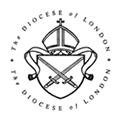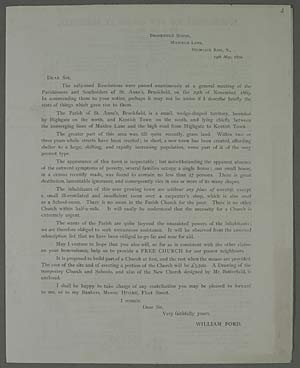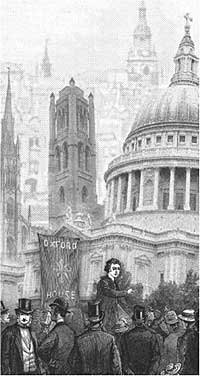How to Write a Church and Parish History: Church Planting
Look
While the church and its surrounding area may be familiar to you it is surprising what you can learn when you look again with new enquiring eyes. The position of the church can be significant. It might, for example, be in a prime position, perhaps on a busy road. Or it may be on the side road of a housing estate. What does the position of the church tell you about the aims and priorities of its pioneers? The position of the church may also tell you something about the people the church was primarily built to reach.
Listen
While it will be difficult to find reliable oral evidence on the setting up of new congregations and parishes in the nineteenth century, it may well be that there are knowledgeable long-standing members of the congregation who can set you off in the right direction. Churches built more recently (that are a great many in London's suburban areas) might be attended by those either with childhood memories of the church in its pioneering years or those who can recall the experiences of their parents and grandparents.
An appeal for funds towards the building of a church and school at St Mary’s, Brookfield. As urban London grew, existing parishes often set up new ‘districts’ in response. This document asserts that ‘in short, a new town has been created’ and that a new church is ‘extremely urgent’ to respond to the ‘great destitution, lamentable ignorance and consequently vice’ of the area. (Image courtesy of the Trustees of Lambeth Palace Library).
Read
For chapters providing a good overview of church extension and some notable case studies see the introduction and chapter one of A. Saint and C. Brooks (eds.), The Victorian Church: Architecture and Society, Manchester: Manchester University Press, 1995. An important study of church planting in response to rapid social change in twentieth century London is Rex Walford, The Growth of “New London” in Suburban Middlesex (1918-1945) and the Response of the Church of England, Lampeter: Edwin Mellen Press, 2007. A readable and controversial account of Anglican church planting strategy which also describes the present-day impact of past strategies is Robin Gill, The ‘Empty Church ' Re-visited, Aldershot: Ashgate, 2003.
Research
A good place to begin research into the planting of an individual church is the records of the Incorporated Church Building Society (to whom grant applications went for new church buildings between 1818 and 1982) held at Lambeth Palace Library. These include the minute books of the society and also files containing individual applications which sometimes include data on the population and character of the parish and also indicate the intentions of the church planters. You may also find correspondence relating to the setting up of individual churches in the Fulham Papers. Both the clerical and churchwarden visitation returns may provide an early report both on the successes and the difficulties encountered in the setting up of new parishes. The parish magazines of individual churches (many are held in the London Metropolitan Archives, though some are still gathering dust in vestries) may describe early efforts to increase the congregation (see also the section on outreach).







